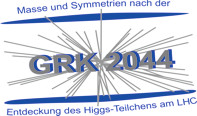Observation of low-energy Excess in XENON1T
Scientists from the international XENON collaboration observed a surprising excess of low-energy events in the XENON1T dark matter experiment. XENON1T was built to detect dark matter, however, the observed signal cannot be caused by dark matter. The scientists have observed an unexpected rate of events, the source of which is not yet fully understood. The signature of the excess is similar to what might result from a tiny residual amount of tritium (super heavy hydrogen), but could also be a sign of something more exciting: the existence of a new particle known as the solar axion or the indication of previously unknown properties of neutrinos.
XENON1T was operated deep underground at the INFN Laboratori Nazionali del Gran Sasso in Italy, from 2016 to end of 2018. Our group at the University of Freiburg contributed important subsystems to the instrument: the time projection chamber which is the "core" of the detector and the data acquisition system. XENON1T has reached the world-leading sensitivity for the search for WIMPs (Weakly Interacting Massive Particles), which are among the theoretically preferred candidates for dark matter, and observed the rarest nuclear decay ever directly measured.
The XENON1T detector, optimised for the search for rarest events, was filled with 3.2 tonnes of ultra-pure, at –95°C liquefied xenon, the innermost 2.0 tonnes of which served as a target for dark matter. When a particle crosses the target, it may collide with a xenon atom generating tiny signals of light and free electrons from the hit xenon atom. Most of these interactions occur from particles that are known to exist. Thus, a number of measures was applied to reduce these disturbing background events to an unprecedentedly low level. And the scientists carefully estimated the residual number of background events. Comparing the data of XENON1T to backgrounds, a surprising excess of 53 events over the expected 232 events was observed.
Now, where is this excess coming from?
One explanation could be a new, previously unconsidered source of background, caused by the presence of tiny amounts of tritium in the liquid xenon. Tritium, a radioactive isotope of hydrogen with two extra neutrons, spontaneously decays by emitting an antineutrino and an electron with an energy distribution similar to what was observed. Already a few tritium atoms for every 1025 xenon atoms would be sufficient to explain the excess. Currently, there are no independent measurements that could confirm or disprove the presence of tritium at that level in the detector, so a definitive answer to this explanation is not yet possible.
More excitingly, another explanation could be the existence of a new particle. In fact, the excess observed has an energy spectrum similar to that expected from axions produced in the Sun. Axions are hypothetical particles that were proposed to understand a symmetry of nuclear forces observed in nature. The Sun may be a strong source of axions. While these solar axions are not dark matter candidates, their detection would mark the first observation of a well-motivated but not yet observed class of new particles, with a large impact on our understanding of fundamental physics, but also on astrophysical phenomena. Moreover, axions produced in the early universe could also be the source of dark matter.
Alternatively, the excess could also be due to surprising properties of neutrinos, trillions of which pass through the detector, unhindered, every second. One explanation could be that the magnetic moment of neutrinos is larger than its value in the Standard Model of elementary particles. This would be a strong hint to some other “new physics”.
Of the three explanations considered by the XENON collaboration, the observed excess is most consistent with a solar axion signal. In statistical terms, the solar axion hypothesis has a significance of 3.5 sigma, meaning that there is about a 2/10,000 chance that the observed excess is due to a random fluctuation (which is thus not fully excluded) rather than a signal. While this significance is fairly high, it is not large enough to conclude that axions exist. The significance of both the tritium and neutrino magnetic moment hypotheses corresponds to 3.2 sigma, meaning that they are also fully consistent with the data.
XENON1T is now upgrading to its next phase, XENONnT, with an active xenon mass three times larger and a background that is expected to be lower. Scientists from the experimetal astroparticle physics group in Freiburg have contributed to the design and construction of the XENONnT detector, the material selection, the Monte Carlo efforts and are once more responsible for the data acqisition system. With better data from XENONnT, the XENON collaboration is confident it will soon find out whether this excess is a mere statistical fluke, a background contaminant, or something far moreexciting: a new particle or interaction that goes beyond known physics.
- Publication:
Observation of Excess Electronic Recoil Events in XENON1T
E. Aprile et al. (XENON Collaboration),
arXiv:2006.09721





